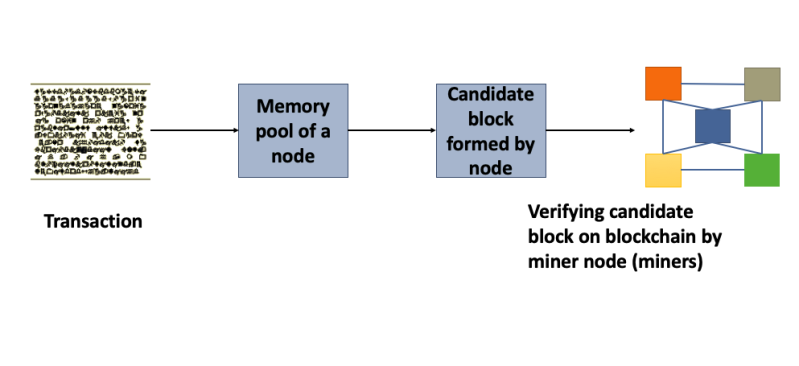
In this blog, I will dive deeper in the nodes that form an essential part of the blockchain network. It is the nodes themselves that propose to include certain transactions on the blockchain. This is achieved through mining. What role do the nodes actually play in the network and what are memory pools and candidate blocks? These questions will be discussed in this blog specifically. The reason why I am discussing the nodes in a separate blog is because the work that these nodes perform is extremely important for the proper functioning of blockchain. The process from transaction to verification on the blockchain starts with the nodes.
What is a blockchain node?
A full node is a computer that is connected to the Internet and uses special software to, for example, download the bitcoin blockchain and verify transactions. You can only be sure that all transactions on the blockchain are correct if you have the entire blockchain yourself. As the bitcoin blockchain grows larger and larger with each transaction, more and more storage is required on your computer. A full node can in principle be a normal computer, but it must have enough storage to download the entire blockchain.
Bitcoin's decentralization relies largely on full nodes: since full nodes control everything themselves, trusted intermediaries are not needed. If miners are allowed to verify a transaction on the blockchain because they solved a puzzle, it does not mean that these miners are allowed to do so immediately. The solution of the solved puzzle must first be verified by the network (by the nodes) as to whether it has been solved correctly. If it is, the network (all nodes) gives approval. Only after approval is given by the full nodes, the miner is allowed to verify the transaction on the blockchain and receives a reward (in the form of a block reward and fee reward).
In short, the nodes perform the following tasks:
- Nodes store blocks, or the blockchain transaction history;
- Nodes distribute transaction history to other nodes so that every node has the most up-to-date blockchain;
- Nodes validate a block and accept or reject a block.
Does a node get a reward?
No, nothing at all! You get nothing in return except that you support the (bitcoin or other) blockchain network and thus the growth of (for example) bitcoin. Because people have a full node on their computer, the network remains decentralized without a central party that manages the network. Full nodes are therefore incredibly important in ensuring the security of the network, especially when it comes to verifying the puzzle that miners must solve. It is therefore mainly done by enthusiasts and hobbyists.
Memory pool
Let's dive deeper in the node. When a node receives a transaction, the node will store this transaction in its memory pool. In this memory pool are also other transactions. All transactions in the memory pool hope to get selected for inclusion in the candidate block. You can therefore see the memory pool as a kind of waiting room for new transactions. The transactions are stored temporarily in the memory pool and are not stored permanently in the memory pool.
Candidate block
Nodes (mining nodes; miners) select transactions from their memory pool and then form candidate blocks. Each miner can choose which transaction to form in a candidate block.
When a transaction is chosen, miners/nodes compete to verify the transaction on the blockchain. Each block or transaction starts with a candidate block. Candidate block also means that a transaction is chosen and then verified on the blockchain by miner nodes. If this happens successfully, then the candidate block will become a "real" block on the blockchain.
To illustrate



Reactie plaatsen
Reacties